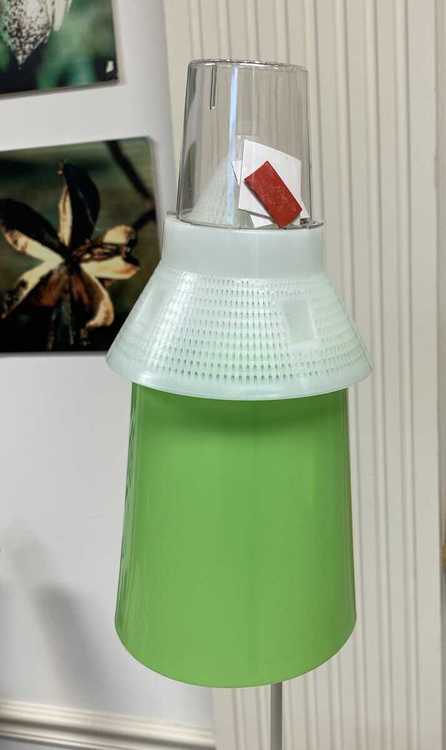
Boll Weevil Trap
This object is a trap to catch boll weevils, which are small brown beetles with big snouts like long nose beetles. When boll weevils came to the United States in the late 1800s, they destroyed the cotton crops. Boll weevils eat cotton leaves when the plant is growing, and their grubs eat the cotton buds. Finally, in the 1960s, farmers and scientists worked together with traps like this, and a new way of using pesticides, to try to kill all boll weevils in the country.
The clear collection chamber on top of the trap holds a dispenser with a pheromone, a chemical that bugs use to communicate and attract other bugs. A strip placed inside the chamber with insecticide kills the beetles. Boll weevils land on the trap body that is bright green like cotton plants. Then they climb up the white cone and come through the small hole on top, into the clear chamber with poison. Using these traps and the new way of applying pesticides, farmers and scientists were able to kill most of the boll weevils in the country. The boll weevil eradication program is one of the most successful in history.
Today, farmers still use these traps to quickly determine if boll weevils are becoming a problem. They put 10 traps up for every mile around the field on tall stakes where the beetles can easily find them. Each trap is closely monitored by the farmer to see if boll weevils are present on their farmland.
-
Cotton Gin Toy Display
-
Boll Weevil Trap
-
Antique Cotton Planting Equipment
-
Fish Traps
-
Water Measuring Instruments
-
Insect Collection
-
Signed Guitar
-
Billy Weir
-
Elvis Presley Faux Fur Jacket
-
Last Home of Sleepy John Estes
-
Map of Sleepy John’s Tours
-
Chairs in "Sleepy" John Estes' Home
-
Flagg Grove School
-
50th Anniversary Tour Costumes
-
Map of Tina Turner Tours